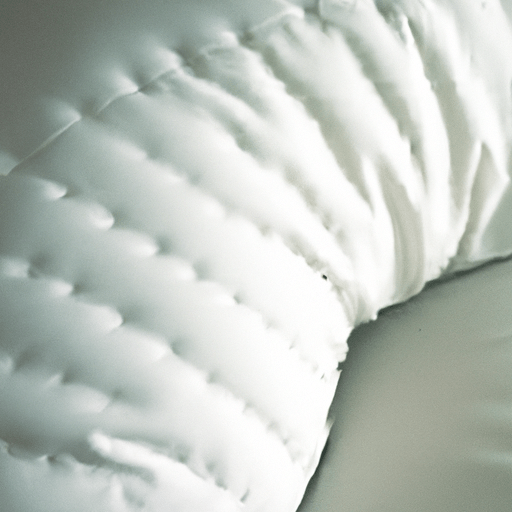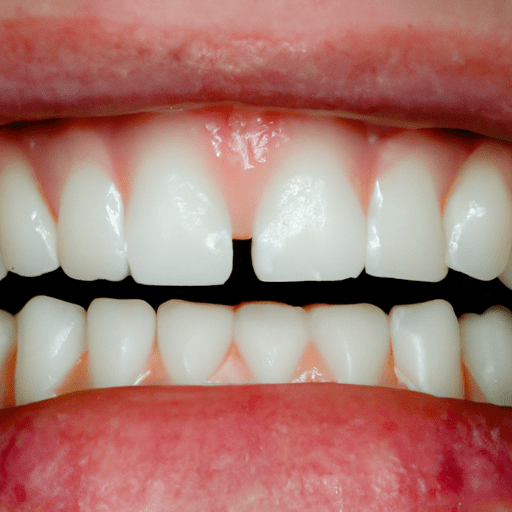Are you struggling to find the perfect sleeping position on your contour pillow? Look no further. In this article, we will guide you through the best sleeping positions to maximize the benefits of your contour pillow. Say goodbye to tossing and turning all night, as we reveal the secret to achieving a comfortable and restful sleep on your contour pillow. Get ready to wake up feeling refreshed and rejuvenated every morning.
Understanding the Contour Pillow
Definition and Design of Contour Pillows
A contour pillow is a specialized type of pillow that is uniquely designed to provide support and alignment for the head, neck, and spine while sleeping. Unlike traditional pillows, which are often flat and uniform in shape, contour pillows have a curved or contoured shape that is intended to mimic the natural curves of the body. This ergonomic design allows the pillow to conform to the individual’s body, providing personalized support and promoting proper spinal alignment.
Contour pillows are typically made from memory foam or latex, both of which are known for their ability to contour to the body’s shape and provide pressure relief. The firmness of the pillow can vary depending on individual preferences and needs, allowing for a customized sleep experience. The contour design of the pillow typically features a higher and lower side, allowing for different levels of support depending on the sleeping position and individual comfort.
Why Contour Pillows Are Different
Contour pillows stand out from traditional pillows due to their unique design and benefits. Unlike regular pillows that may flatten over time and lose their shape, contour pillows retain their shape and offer consistent support throughout the night. The contour shape of the pillow promotes proper spine alignment and reduces the risk of developing neck and back pain. Additionally, contour pillows can alleviate issues related to sleep disorders, such as snoring and sleep apnea, by promoting healthy breathing and reducing airway obstruction.
Benefits of Using Contour Pillows
Enhanced Neck Support
One of the key benefits of using a contour pillow is the enhanced neck support it provides. The contoured shape of the pillow cradles the neck, providing optimal support and relieving pressure on the neck muscles. This helps to alleviate pain and stiffness that can often result from poor neck alignment during sleep. By properly supporting the neck, contour pillows can help prevent the development of conditions such as cervical spondylosis and neck muscle strain.
Improved Spine Alignment
Proper alignment of the spine is crucial for overall comfort and health during sleep. Contour pillows are specifically designed to support the natural curves of the spine, helping to maintain proper alignment throughout the night. When the spine is aligned correctly, it reduces the risk of developing chronic back pain and discomfort. By providing support to the head, neck, and shoulders, contour pillows help to align the entire spinal column, promoting a more restful and rejuvenating sleep experience.
Relief from Sleep Disorders like Snoring and Sleep Apnea
Contour pillows can be particularly beneficial for individuals who suffer from sleep disorders such as snoring and sleep apnea. The elevated and contoured design of these pillows helps to open up the airways and reduce airway obstruction that can contribute to snoring and sleep apnea episodes. By promoting better airflow and reducing the collapse of the airway, contour pillows can significantly improve sleep quality and reduce the frequency and severity of snoring and sleep apnea events.
Which Side of a Contour Pillow to Sleep on
Correct Placement of Contour Pillow
To maximize the benefits of a contour pillow, it is essential to understand the correct placement of the pillow for different sleeping positions. When using a contour pillow, the higher side of the pillow should be positioned under the neck and the lower side under the head. This arrangement ensures proper support for both the neck and the head, helping to maintain optimal alignment throughout the night.
Determining the Right Side for Your Needs
The right side of the contour pillow to sleep on can vary depending on individual needs and preferences. As a general guideline, back sleepers may find better support and alignment by sleeping with the higher contour side under the neck. Side sleepers, on the other hand, may benefit from sleeping with the lower contour side under the head to maintain a more neutral spinal alignment. It is important to experiment with both sides and adjust the position based on personal comfort and alignment.
The Back Sleeping Position and Contour Pillows
The Benefits of Back Sleeping with Contour Pillows
Back sleeping is widely regarded as one of the best sleeping positions for spinal alignment and overall health. When combined with a contour pillow, the benefits are further enhanced. By using a contour pillow while sleeping on your back, you can ensure that your neck is properly supported and aligned with the rest of your spine. This promotes better breathing and reduces the risk of developing snoring or sleep apnea. Additionally, back sleeping with a contour pillow can help alleviate or prevent issues such as acid reflux, as the elevated position helps to keep the stomach below the esophagus, reducing the likelihood of stomach acid flowing back up.
Potential Concerns and How to Address Them
Some individuals may experience concerns when back sleeping with a contour pillow, such as discomfort or strain in the lower back. To address this, it is important to ensure that the contour pillow properly supports the neck and encourages a slight forward curve in the lower back. Additionally, incorporating a pillow or rolled towel under the knees can help alleviate any strain on the lower back and enhance overall comfort while back sleeping with a contour pillow.

The Side Sleeping Position and Contour Pillows
The Benefits of Side Sleeping with Contour Pillows
Side sleeping is another popular sleeping position, and when combined with a contour pillow, it can offer significant benefits. The contoured shape of the pillow provides excellent support for the head, neck, and shoulders, helping to maintain proper alignment and reduce the risk of developing pain or discomfort. Side sleeping with a contour pillow can also improve circulation, minimize snoring, and promote proper spinal alignment, particularly when the lower contour side of the pillow is positioned under the head.
Potential Concerns and How to Address Them
Some individuals may experience concerns when side sleeping with a contour pillow, such as pressure points or discomfort in the shoulder or hip. To address these concerns, it is important to ensure that the contour pillow is adequately supporting the head and neck, allowing the spine to remain in a neutral position. Additionally, using a body pillow between the knees can help align the hips and reduce pressure on the lower back, enhancing overall comfort while side sleeping with a contour pillow.
The Stomach Sleeping Position and Contour Pillows
The Drawbacks of Stomach Sleeping with Contour Pillows
Stomach sleeping is considered the least ideal sleeping position, as it can strain the neck, back, and spine. When using a contour pillow for stomach sleeping, it may not provide the necessary support for proper spinal alignment. The elevated contour design can cause the spine to arch unnaturally, leading to discomfort and potential pain. Stomach sleeping with a contour pillow may also exacerbate issues such as acid reflux or snoring, as the elevated position can contribute to increased airway obstruction.
Tips to Improve Comfort for Stomach Sleepers
If you prefer to sleep on your stomach, it is generally recommended to avoid using a contour pillow. However, if you still wish to use one, opt for a low contour pillow or even a flat pillow. This will help minimize the arching of the spine and reduce strain on the neck and lower back. Additionally, placing a flat pillow or rolled towel under the stomach can provide some extra support and alleviate pressure on the lower back. It is important to remember that transitioning to a different sleeping position, such as side or back sleeping, may provide greater benefits for overall comfort and spinal alignment.

Understanding Your Personal Sleeping Style
How to Determine Your Sleep Style
Understanding your personal sleeping style is crucial for choosing the right contour pillow and optimizing your sleep experience. To determine your sleep style, consider your preferred sleeping position throughout the night. Are you predominantly a back, side, or stomach sleeper? Do you tend to shift positions frequently? By observing your natural sleep patterns, you can gain insights into the ideal contour pillow and sleeping position that will best suit your needs.
Adjusting Your Sleep Style for Optimal Health
If your current sleep style is causing discomfort or issues, it may be beneficial to make adjustments to promote optimal health and well-being. For example, if you are primarily a stomach sleeper experiencing neck or back pain, consider transitioning to side or back sleeping with the appropriate contour pillow. By making small adjustments to your sleep style and incorporating the right pillow support, you can enhance spinal alignment and reduce the risk of developing sleep-related issues.
Transitioning to a Contour Pillow
First Impressions: What to Expect
When transitioning to a contour pillow, it is important to manage your expectations and understand that there might be an adjustment period. Initially, you may find the contoured shape and firmness of the pillow unusual compared to a traditional pillow. It is normal to take a few nights or even weeks to fully adapt to the new pillow. Some individuals may experience temporary discomfort or stiffness as their body adjusts to the improved support and alignment provided by the contour pillow. However, most people find that the benefits outweigh any initial discomfort and soon experience improved sleep quality and reduced pain.
Breaking in Your Contour Pillow: Tips and Tricks
To help break in your contour pillow and facilitate the adjustment process, there are a few tips and tricks you can follow. Firstly, give yourself time to get used to the pillow. Start by using it for a few hours during the day while reading or watching TV to acclimate your body to the contour shape. Gradually increase the duration of use until you are comfortable using it throughout the entire night. Additionally, consider experimenting with different pillow heights or fillings to find the ideal level of support for your specific needs. Remember, everyone’s sleep preferences are unique, so it is important to customize the pillow according to your individual comfort.
Common Mistakes When Using a Contour Pillow
Using the Wrong Pillow Height
One common mistake individuals make when using a contour pillow is selecting the wrong pillow height. Contour pillows are available in different heights to accommodate various sleep preferences and body sizes. Choosing a pillow that is too high or too low for your needs can contribute to discomfort and improper spinal alignment. It is crucial to carefully consider your height, body type, and sleeping preferences when selecting a contour pillow to ensure that the height is suitable for your individual needs.
Positioning the Pillow Incorrectly
Another common mistake is positioning the contour pillow incorrectly. It is important to follow the manufacturer’s instructions or general guidelines for correct pillow placement based on your sleeping position. Placing the pillow too far forward or backward can disrupt proper spinal alignment and result in discomfort or strain. Take the time to adjust the pillow’s position and experiment with different placements until you find the most comfortable and supportive position for your specific needs.
Maximizing the Benefits of Your Contour Pillow
Maintaining Your Pillow: Cleaning and Lifespan
To maximize the benefits of a contour pillow, proper maintenance is essential. Regularly cleaning your contour pillow is important to prevent the accumulation of dust, allergens, and bacteria. Most contour pillows come with removable and washable covers for easy cleaning. Follow the manufacturer’s instructions for cleaning and care to ensure the longevity of your pillow. Additionally, it is recommended to replace your contour pillow every 12 to 18 months, or as needed, to maintain optimal support and hygiene.
Pairing Your Contour Pillow with Other Sleep Aids
To further enhance your sleep experience and maximize the benefits of your contour pillow, consider pairing it with other sleep aids. For example, using a sleep mask or blackout curtains can create a dark and conducive sleeping environment. White noise machines or earplugs can help drown out any disruptive noises and promote uninterrupted sleep. Additionally, incorporating relaxation techniques such as meditation or aromatherapy can complement the comfort and support provided by your contour pillow, promoting a deeper and more restful sleep.
In conclusion, understanding the contour pillow and making informed decisions regarding its usage can lead to improved sleep quality and overall health. The unique design of contour pillows provides enhanced neck support, improved spine alignment, and relief from sleep disorders such as snoring and sleep apnea. Determining the correct side of the pillow to sleep on, based on your preferred sleeping position, can optimize the benefits of a contour pillow. While back and side sleeping with a contour pillow offer numerous benefits, stomach sleeping may not be ideal due to potential discomfort and strain. By understanding your personal sleeping style and adjusting it accordingly, you can tailor your sleep experience to promote optimal health. Transitioning to a contour pillow may require an adjustment period, but with time and patience, the benefits will become evident. Avoiding common mistakes, maintaining your pillow properly, and exploring other sleep aids can further maximize the benefits of using a contour pillow. By incorporating a contour pillow into your sleep routine, you can achieve better support, alignment, and ultimately, a more restful and rejuvenating night’s sleep.







